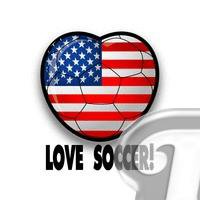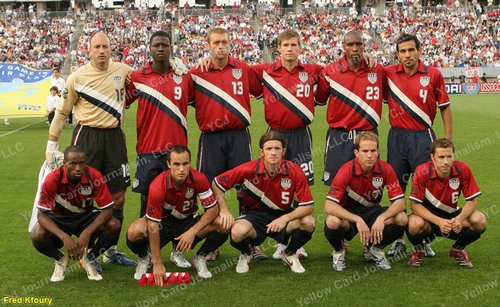An Overview of American Soccer History

The College Era, and Rules Consolidation, 1862-1875
The Working-Class and Immigrant Eras, 1875-1894
The First Dynasties, 1913-1921
The 1960's: The Birth of the American Soccer Renaissance
Outdoor soccer reaches a low: 1985
The Rebirth of Outdoor Soccer, 1988-1994
1994: The World Cup comes to America
From World Cup to Major League Soccer (1995-1996)

The First Dynasties, 1913-1921
The ethnic influence affected the course of the game through the early 1900's -- it was still clustered mainly in working-class communities along the northeastern part of the United States, as well as some selected cities such as St. Louis, Chicago and Pittsburgh. Leagues were mostly amateur and semi-pro, usually very localized and based on state associations. Eventually its growing success resulted in attempts to establish national leagues. At this time, due to the United States's large size and the difficulty of transportation, there were no true national leagues, even major league baseball was entirely situated in the northeast and Midwest, although minor leagues operated all over the country. The same occurred with Soccer, with true major leagues earning that title mainly through their higher level of professionalism, rather than the amount of territory covered. Soccer went into a mini-decline around the turn of the century, which was reversed by the re-establishment of the NASFL and American Cup in 1906, and the decision of the St. Louis Soccer League to turn fully professional. The tide started to shift from New England to the New York/New Jersey region, as the NAFBL gained strength and the cup was won primarily by New York-based teams. The Southern New England Football league formed in 1914, out of some of the stronger of the local semi-pro teams in New England. By this time, soccer was also established in Eastern Pennsylvania, St. Louis, Chicago, and Pittsburgh, and had made its re-entry at several dozen colleges.
Probably the most important developments to follow the establishment of the USFA (Now the USSF) were the establishment of an official national championship tournament (the National Challenge Cup), which was first played in 1914, and the debut of sanctioned international competition. The Challenge Cup, open to any club that wished to enter, amateur or pro, was the first truly national competition, and did much to increase the prestige of the game. Now known as the US Open Cup, this is the oldest continuous team sport tournament in the country (outside of the World Series and Hockey's Stanley Cup), but in later years, the cup struggled to be taken seriously by the ISL and NASL in the 1960's.
By this time, the first true dynasties were beginning to emerge, among the Fall River Rovers, Bethlehem Steel, Kearny Scots and others. The NAFBL in its second incarnation was much more solid and soon stood out over the regional leagues, as did the SNESL. Important steps were being made toward the professionalization of the game. With the weakened American Cup still competing with the National Challenge Cup, a couple of teams went on to win the first "doubles" in the US, by copping both cups.
The balance of power shifted during this era from southeastern New England to the New York/New Jersey region, and New York based teams often took the American Cup home during the WWI period. Kearny sported several teams that were perennial contenders, including the Kearny Scots and Kearny Clark, with frequent competition from the Paterson True Blues.
On the professional front, the recognition by FIFA allowed the US to field an official National Team in sanctioned competition. Their first games, in 1916, included a 3-2 win over the new Swedish team, and a 1-1 draw with Norway. Sadly, World war I derailed the international tours, and the US did not field a national team again until the 1924 Olympics.
Three of the early dynasties of American Soccer were the Fall River Rovers, winners of the American Cup in 1888 and 1889, and Bethlehem Steel, who won the American Cup in 1914, 1916, 1917, 1918, and 1919 (finalist in 1920), and winners of the National Challenge Cup in 1915, 1916, 1918, and 1919 (finalist in 1917). Bethlehem won the first "doubles", copping both cups in 1916, 1918 and 1919. In fact, Bethlehem won a "triple" in 1919, by virtue of also winning the NASFL title that year (followed by league titles the next two seasons).